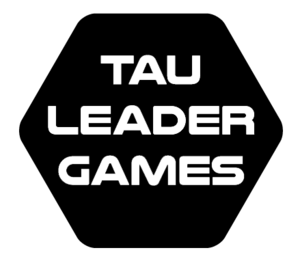BELT SCROLL ACTION GAMES
ベルトスクロールアクションゲーム
More popularly known in the West as Beat ‘Em Up games, these games usually involve moving to the right of the screen while beating up anything that gets in your way. Perhaps the earliest belt scroll action games were Kung-Fu master in 1984 and then Renegade in 1986, but it wasn’t until Final Fight arrived in 1989 that the genre’s primary conventions were codified.
Beat ‘em up games traditionally feature players as the protagonists fighting an improbably large number of opponents. A hallmark of the genre is the inherent multiplayer action and difficulty that begat the arcade popularity. Below is a pseudo-chronological list of notable beat em ups that I recommend.
Double Dragon (1987)
Double Dragon quickly became one of the most popular beat em ups and proved the genre had an audience. It was one of the first games to introduce co-operative game play, as well as innovations like picking up weapons and holding people.
Final Fight (1989)
Teenage Mutant Ninja Turtle (1989)
Pu·Li·Ru·La (1991)
Streets of Rage Series (1991 - 2020)
The Great Battle Series (1991 - 1997)
One of the earliest forms of a “cross-over” game in which characters from different media franchises played together. The great battle series leveraged the popularity of some of Japan’s biggest attractions at the time: Ultraman, Kamen Rider, and Gundam. Each of these franchises would go on to become giants in their industries and series of games would spin off into various genres including pinball, soccer, and racing.
This is the series that would prove to toy and cartoon companies that it would be worth it to share the spotlight. Sadly, the latest release was in 2015 and there has been no word of a sequel.
TMNT: TuRTLES IN TIME (1991) / SImPSONS ARCADE (1991) / X-Men Arcade (1992)
Whichever one was in your hometown arcade was the best one. There was simply nothing like gathering 3 of your friends and battling your way through endless stages full of recognizable characters and relentlessly annoying sound effects. Konami mastered the art of translating the hottest 90s cartoons into quarter-eating machines.
Denjin Makai Series (1993 - 1995)
Armored Warriors (1994)
Top Hunter: Roddy & Cathy (1994)
Mighty Morphin Power Rangers (1994)
Sailor Moon Arcade
Guardian Heroes (1996)
Dungeons & Dragons: Shadow Over Mystara (1996)
With role-playing games starting to gain traction in the video game sphere, Capcom delivered a fighting game that included clever RPG mechanics such as up-gradable magic spells, item shops in between levels, and multiple endings. Many of these new features would go on to become standard issue once home consoles began overtaking arcade machines and players needed a greater challenge than an unlimited amount of quarters. Shadow over Mystara is actually sequel to Dungeons and Dragons: Tower of Doom, but Mystara is the superior game.
Today you can grab both of the games in a convenient two-pack titled Dungeons & Dragons: Chronicles of Mystara. SoM would be one of the last 2-3 beat em ups ever created by Capcom and is a fine culmination of all that Capcom learned in making the games.
Three Dirty Dwarves (1997)
Battle Circuit (1997)
The last beat em up Capcom would make for arcades. Taking place in a sci-fi alternate future with manga style graphics, Battle Circuit can only be described as a wild experiment. The characters include a cybernetic bounty hunter, a part-time fashion model, a sentient ostrich, and a plant/lizard hybrid carnivore. Playing Battle Circuit one can tell that it was truly a labor of love by developers who got the green light to do basically anything they wanted. With no IP to hold them back, the stages are bright and colorful with a delicious synth soundtrack that all work together to highlight frenetic combat and some of the best pixel art in arcade history. Capcom’s Battle Circuit proved that it’s better to burn out than to fade away.
Sengoku 3 (2001)
The Sengoku series never really took off in the West. Made by SNK, who were mostly known for their not-street-fighter fighting games and the unrivaled Metal Slug series, Sengoku took SNK’s responsive fighting game controls and applied them to a mature beat em up game. Sengoku 3 is more combo-oriented than its peers. With large sprites and detailed backgrounds, Sengoku blurs the lines between a beat em up and a straight up 2D action adventure game. How come people only like to play as Okuni? Hmmm
Viewtiful Joe (2003)
By the early 2000s, home consoles began to surpass the capabilities of arcades. Beat em up games were starting to look old and dated. Along with shmups, beat em ups were largely associated with arcades, shallow and repetitive. Home consoles could do so much better. Our first real revival of the genre came from none other than Capcom themselves. Having focused on 3D action games like Resident Evil and Dino Crisis, Capcom through Clover studios returned to their beat em up roots with the glorious Viewtiful Joe. Based on tokusatsu television, Viewtiful Joe was a single player beat em up game that gave players special powers based on camera tricks like fast forwarding to move fast or zooming in to freeze people.
Viewtiful Joe would spawn one sequel, two spin-offs and an anime. Since then, other than a few cameo appearances in Capcom fighting games, he’s been missing in action.
TMNT (2007)
Castle Crashers (2008)
Muramasa: The Demon Blade (2009)
Scott Pilgrim vs. the World: The Game (2010)
Code of Princess (2012)
Dragon’s Crown (2013)
Kaizou Choujin Shubibinman Zero (2018)
A long lost SNES Satelleview game that was recently resurrected. It’s a very simple action game with small moveset for each of the two characters, but the controls are spot-on and the humor has stood the test of time. Recommended to play with a partner in the 2 player mode.
River City Girls (2019)
Streets of RAge (2020)
Dawn of the Monsters (2022)
Honorable Mentions
